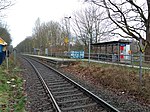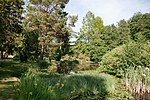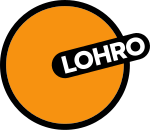Rostock Zoo
Buildings and structures in RostockRostockTourist attractions in RostockZoos in Germany

Rostock Zoo (German: Zoologische Garten Rostock) is a zoo in the city of Rostock, founded in 1899. It covers 56 hectares and with 4,500 animals from 320 species, Rostock Zoo is the largest zoo on the German east coast. Rostock Zoo is studbook keeper of Polar bears within the European Endangered Species Programme. The director of Rostock Zoo is Udo Nagel.
Excerpt from the Wikipedia article Rostock Zoo (License: CC BY-SA 3.0, Authors, Images).Rostock Zoo
Seebärenallee, Rostock Gartenstadt (Ortsbeirat 10 : Gartenstadt/Stadtweide)
Geographical coordinates (GPS) Address Nearby Places Show on map
Geographical coordinates (GPS)
| Latitude | Longitude |
|---|---|
| N 54.078083333333 ° | E 12.09035 ° |
Address
Elche
Seebärenallee
18059 Rostock, Gartenstadt (Ortsbeirat 10 : Gartenstadt/Stadtweide)
Mecklenburg-Vorpommern, Germany
Open on Google Maps










